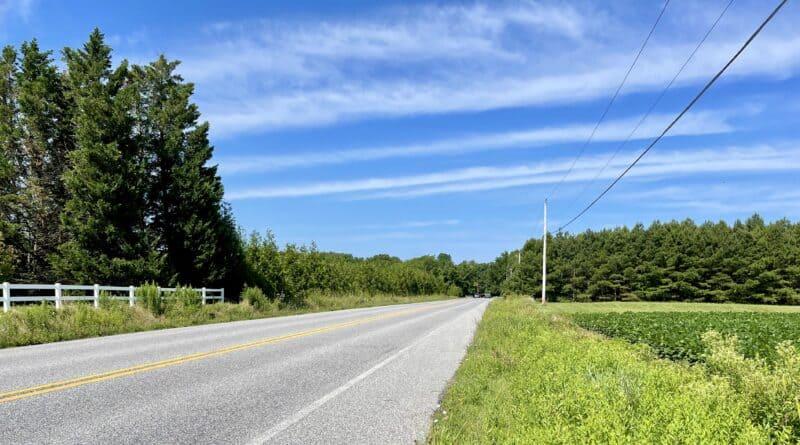A bipartisan coalition of local officials from every region of the state urged a House committee on Thursday to reverse steep recession-era cuts in road repair aid to the counties.
At a hearing before the House Environment and Transportation Committee, officials from rural and suburban counties and the City of Baltimore testified that a 2009 change in a key formula has severely limited their ability to keep roads and bridges in good repair.
The cuts were approved in reaction to a steep drop in revenues brought about by the Great Recession.
Laura Price, a member of the Talbot County Council and president of the Maryland Association of Counties, said localities are on a “starvation diet” as a result of the lost revenues.
Aid to Talbot dropped from more than $3 million to $160,000, she said. Despite a “slight increase in 2018, we’re still only receiving 20% of what we did before the cuts.”
“While I may not have as many zeros at the end of my budget as some of the larger counties, it does have the same impact,” Price (R) told lawmakers.
For 40 years leading up the recession, localities received 30% of highway-user revenues, a fund that draws from taxes on gas, vehicle titles, registration fees, car rentals, and the state corporate income tax.
St. Mary’s County Commission President Randy Guy (R) said that at the rate his county is repairing its roads, it will take 80 years to catch up. The cuts approved in 2009 caused St. Mary’s share to shrink from $6.6 million in FY 2009 to $612,000 in FY 2022.
“Our residents deserve better,” he said. “Our roads are actually in a disaster status.”
Local leaders want the General Assembly to approve House Bill 1187 and Senate Bill 726, measures that have attracted long list of supporters from both parties.
Baltimore Mayor Brandon M. Scott (D) and Frederick County Executive Jan Gardner (D) testified in support of the House bill on Thursday. Howard County Executive Calvin S. Ball (D) and Anne Arundel County Executive Steuart Pittman (D) testified in support of the Senate version of the bill on Wednesday.
If approved, the measures would boost local road repair funds by $431 million in Fiscal Year 2025, $436 million in FY 2026, and $442 million in FY 2027. The state’s share of “highway-user revenues” would drop from 90.4% to 70.0%. Maryland’s counties and municipalities and Baltimore would see their collective share increase from 9.6% to 30%.
In a rare appearance by a member of Republican Gov. Lawrence J. Hogan Jr.’s cabinet before a legislative committee, Transportation Secretary Jim Ports urged the committee to support rival road maintenance bills, House Bill 410 and Senate Bill 400.
Those measures would funnel an additional $83 million to local governments in FY 2025 and slightly more in the following years.
Ports warned that any increase above the amounts supported by the Hogan administration “would have a significant impact” on future projects. “We would have to remove over $1 billion of capital funding currently programmed in the (consolidated transportation program),” he said.
The House version of the bill offering more robust road maintenance funding to the counties is sponsored by Del. Carl Anderton Jr. (R-Lower Shore). It has attracted support from an unusual array of conservative, moderate and progressive lawmakers.
Anderton recalled that when he served as mayor of Delmar in Wicomico County, officials had to “scrape, borrow and plead and use coupons” to repair a damaged road.
His proposal is supported by the Maryland Association of Counties (MACO) and the Maryland Municipal League.
Local officials believe the coming infusion of federal infrastructure money makes now the ideal time for the legislature to act. “All this is doing is putting back the slices of the pie where they were back before 2009,” said MACO Executive Director Michael Sanderson.
Added Angelica Bailey, head of governmental relations at the Municipal League: “It’s an election year. We have a state surplus. We’ve got federal infrastructure money coming. This is the right thing to do. Now is the time to do it.”
by Bruce DePuyt



Write a Letter to the Editor on this Article
We encourage readers to offer their point of view on this article by submitting the following form. Editing is sometimes necessary and is done at the discretion of the editorial staff.